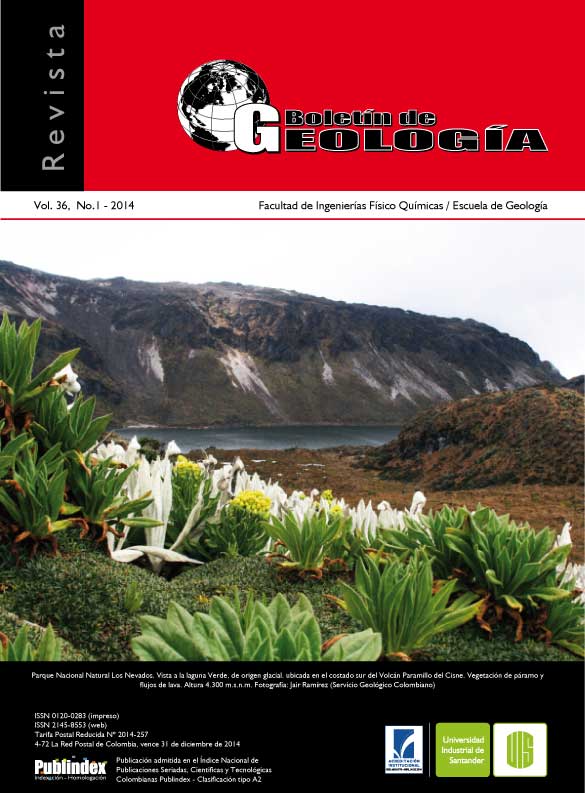APPLICATION OF THE METHODOLOGY OF PROCESSING AND INTERPRETATION OF MAGNETOTELLURIC INFORMATION ON VARIOUS PROFILES LOCATED IN THE WESTERN AREA OF THE NEVADO DEL RUIZ VOLCANO - COLOMBIA.
Published 2014-05-22
Keywords
- Structure resistive,
- Processing,
- Modeling,
- Profiles MT,
- Rotation MT tensor
How to Cite
Abstract
This work is framed within a geothermal research project cofinanced by ISAGEN and COLCIENCIAS called “Modeling Subsurface Structure Resistive From Surveys Magnetotelluric In Geothermal Areas Of Colombia, Case Nevado Del Ruiz” In which through a cooperative agreement between the Universidad Autónoma de México (UNAM) the Servicio Geológico Colombiano (SGC) and the Centro Internacional de Física (CIF) has been acquired magnetotelluric information composed of 105 soundings located to west of the Nevado del Ruiz. This paper illustrates the application of a methodology for processing and modeling based on 58 soundings associated with five (5) profiles.
The selection of the profiles was performed using criteria such as high density of stations, proximity to a well drilled in the area and the possibility of crossing some of the surface geological structures most relevant.
In the data field processing, the SSMT2000 and MTEDITOR software were used, both from the Phoenix Geophysics House, which are programmed in the basic processing algorithms such as transformation to the frequency domain programmed, the cross spectra and auto spectra, and magnetotelluric transfer function; thus is possible to obtain as a first result the MT (magnetotelluric) soundings values expressed in apparent resistivities and phases for each frequency.
For the modeling state we used the winGlink software from the Geosystem house. As a first approximation 1D nversion were made. The invariant curve of the impedance tensor with Bostick algorithm (Bostick Transform), with Occam algorithm and additionally with the model resistivities discrete layers were used. After an analysis of the dimensionality is passed to the 2D inversion. The procedure consisted of rotating the impedances tensor o the main axes (as a first approximation) for profiles oriented NW (MT 1 and MT 2) and SW (MT 3) and rotate the tensor in EW direction for profiles oriented NS (MT 4 and MT 5), selection made from regional strike directionality found.
For the 2 models, two electromagnetic modes (TE and TM) simultaneously in the inversion process were used. Finally, electrical resistivity models were obtained along five magnetotelluric profiles where we can observe that 2D models are more accurated due to the high complexity of the area (as best approach to information present n soundings).
